An Infinite Dungeon
A quick and dirty method for building out a massive map and filling it with stuff
This last Saturday, I continued my Advanced Dungeons & Dragons 1st Edition game with a party of 4. The group wanted to explore the buried Old City beneath their feet. Their current location is a sprawling metropolis: one of the largest cities in the world and the holy capital of the dominant faith. It has been around since the darkest days of an ancient cataclysm (since so much good fantasy is post-apocalyptic) and has subsequently gone through many iterations.
The Church has been advertising the need for adventurers to plumb the depths and discover why so many monsters have made their home down there. Because the city is so huge and ancient, I needed the halls and rooms underground to be effectively infinite - so I had to approach this one a little differently as far as creating it went. The Old City is chaotic and strange, many people and things have gotten lost wandering its halls and the borders of each floor would go well beyond what would fit on any number of graph paper sheets. So I went through the books I had: Appendix A in the AD&D 1st. Ed. Dungeon Masters Guide, the solo game Four Against Darkness, and acquired Ker Nethalas: Into the Midnight Throne on a whim. That last purchase would provide an interesting method for building out a dungeon of the type I needed.
While drawing dungeons and filling them with stuff is still my primary mode (and a cathartic exercise at the end of a long day), I’ve found having the below method has provided a framework for mega-dungeons of many types and themes without the requisite work of creating an unfathomable sprawl many floors deep. In many cases, a mega-dungeon would be the primary focus of a campaign, in such circumstances my shortcut would fall short of what’s needed. However, if such a dungeon is more incidental (perhaps the players decide to take on an epic adventure?), then this method can easily be used to create a hostile underground sprawl as the situation calls for - my own game would organically require one to serve as Demogorgon’s Prison as the situation in the campaign world developed.
Exploring a Necropolis
Ker Nethalas’s method is relatively simple, but it never occurred to me until I’d read it: draw the corridors and rooms and small pieces ahead of time and then commit them to paper in a random order as the party plays through the session.
There are a hundred map pieces that can be generated off of the table, but the makers of that game also provide an alternative method: a deck of cards. It’s simple: as players explore, I draw from the deck and hand them the card I drew, incorporating it into the narrative.
Of course, you don’t need to buy a premium deck of cards…you could also get a pack of graph-ruled index cards and fill them with your own corridors and rooms as you desire. I’ve drawn out and inked my own deck in this way. While Appendix A does provide a solid way of doing the same thing, a simple pre-drawn deck cuts out much dice rolling and speeds things up significantly when you’re around the table (though I still recommend practicing with Appendix A either solo or with a willing group).
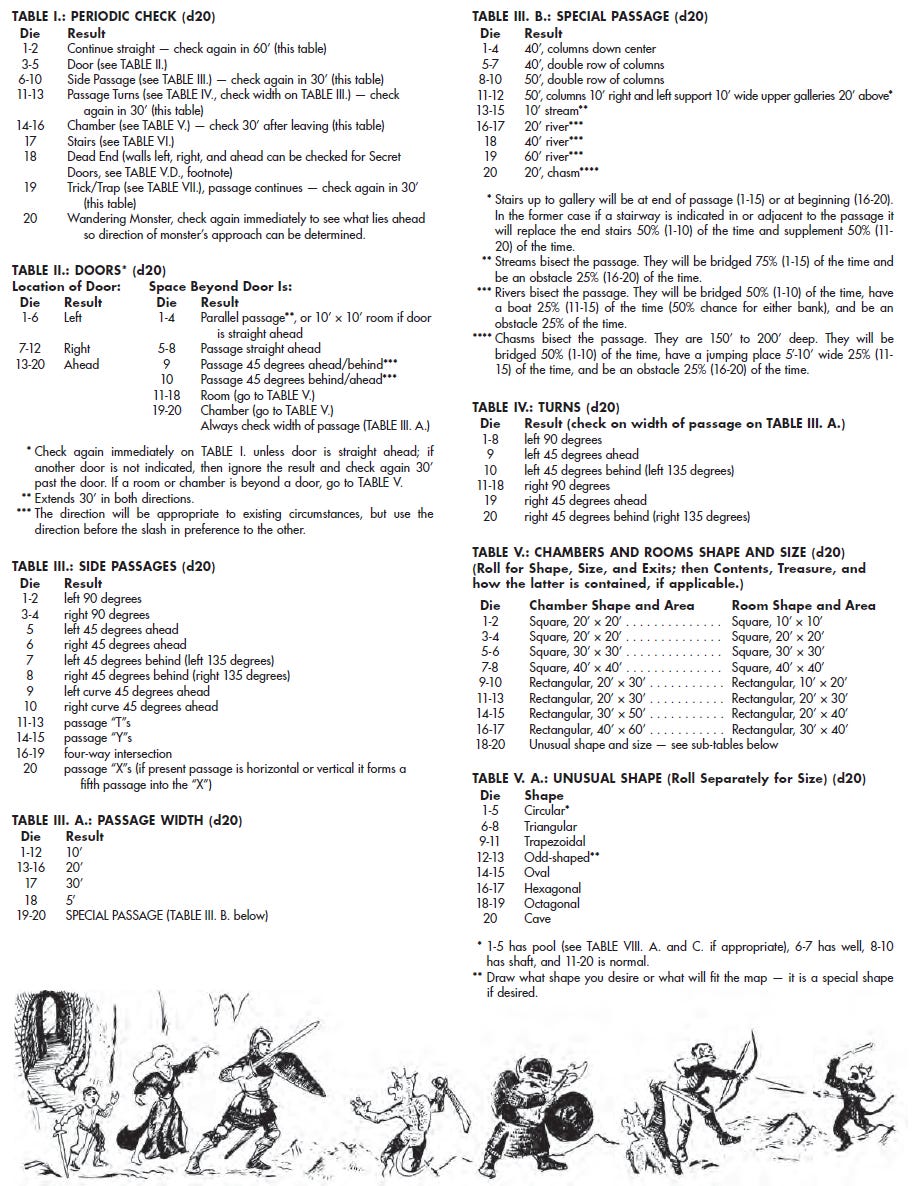
It is a load off the old noggin’ to simply hand the mapper the next map piece, rather than attempting to communicate the dimensions of a room you also didn’t know existed until you rolled on the chart.
Populating a Necropolis
Figuring out how to generate the map was the hard part for all this, filling those rooms and corridors is as simple as could be: without adjustment, I just use the Appendix A - Table I.: Periodic Check as presented and it’ll basically feel like the dungeon is alive.
From the above table, if I roll a “19” I will then roll a d6 die to determine if I will use the common trick/trap table:
While a result of “1” on the d6 results in my use of the “special” table filled with hand-crafted tricks and traps:
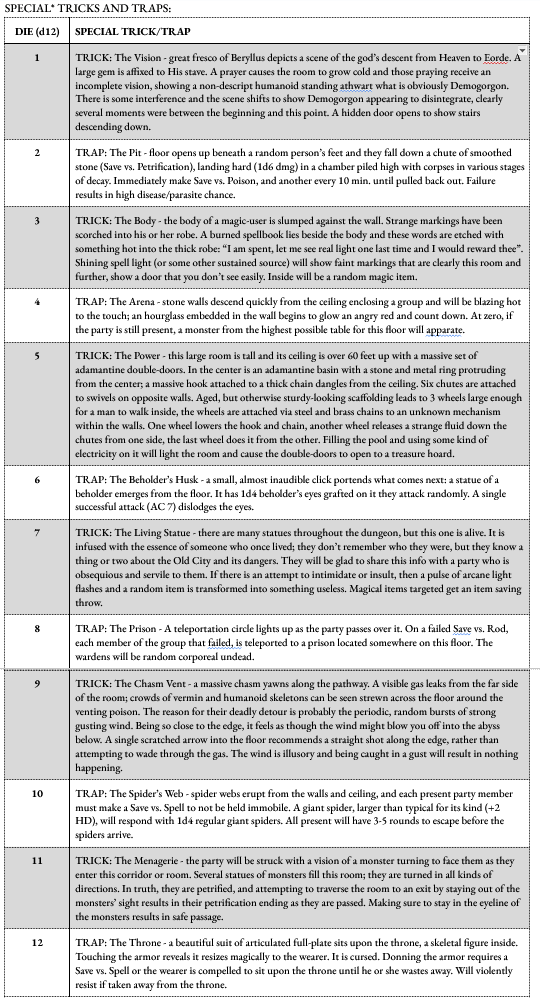
Finally, the loot and treasure table I use is also in Appendix A:
That is: if “Monster + Treasure” is indicated, then I roll two percentile dice and add +10% to the result.
As an aside: coinage, gems, and jewelry are multiplied by the level of the dungeon - Ex. finding gold coins on floor 3 suggests ~750 gp is appropriate (250gp x floor 3).
If only “Treasure” is indicated, then I roll percentile dice once and take the flat result. For the sake of time, if your treasure roll says there is a magic item, it wouldn’t be inappropriate to say that one of the monsters is using it and you can just choose which item they have.
Example: if I roll an encounter with orcs and a magic item is supposed to be there, instead of rolling on more charts and delaying the action to determine what it is, I would just say there is a leader orc with a magic sword. He might get an extra hit die to show that he’s a tough customer who’s earned it.
Guarding a Necropolis
Speaking of encounters…what the heck is lurking down here? Unsurprisingly, I use the AD&D 1e DMG - Appendix C: Random Monster Encounters as we go along through the evening. It provides a wide variety of potential monster and people encounters that are within a certain range of power as the players progress through the dungeon. No thought beyond improvising how the party intersects with them is required.
If that is not your preferred system, and the one you use doesn’t have appropriate encounter tables, then simply make a quick one with monsters you think would be appropriate to run into. The basic format for a serviceable encounter table is such:
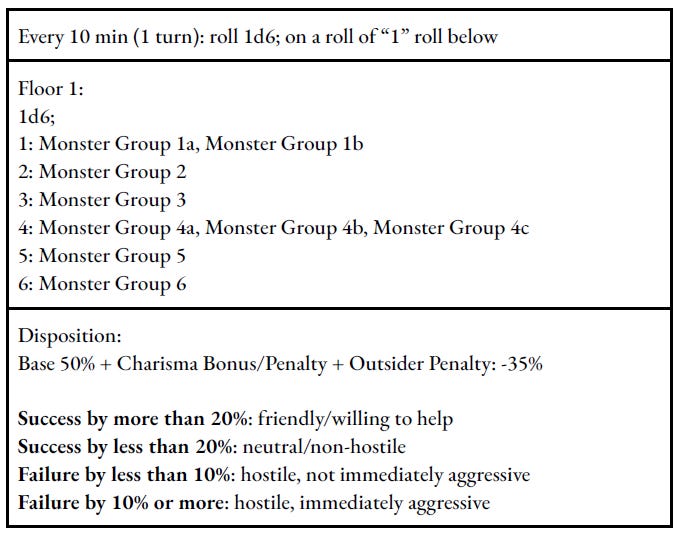
These encounters may also include other adventurers or maybe lost city dwellers or whatever you want: they need not be all evil beings. You can use a d6 or any other dice that you prefer. A simple encounter table is easy enough to put together. Make one for each floor - the deeper down they go, the monsters ought to become more and more dangerous. A group of level 1 adventurers may only need as many as 3 floors of encounters, since by floor 3 they ought begin to feel outclassed by the things wandering around.
When monsters are indicated either through a wandering monster check or when a newly encountered room shows that some are present, roll on the encounter table and quickly figure what they’re doing.
Optional: Describing a Necropolis
I do consider this step to ultimately be optional, but I found it supports my improvisational skills and so I like to use it. Ker Nethalas provides 2 tables: one describes the corridors and the other is very large, containing many room descriptions that range from basic to moody and evocative. I’ve taken those descriptions and made them fit for my game, samplings of which I’m providing here:
When a new room or corridor is entered, I simply roll on the table and use what’s there in combination with chamber/room contents I’ve rolled up.
I don’t feel this bit is strictly necessary, but it might be useful to figure out the aesthetic of the place ahead of time if you struggle with varied and engaging descriptions off the cuff. I will also suggest that sprinkling little hand-crafted touches in the generation process helps distinguish the dungeons from each other and prevents them from feeling too formulaic as time goes on…maybe rotate too-used monsters, traps, or tricks out if they pop up too much.
Summarizing a Necropolis
And that’s it. Too quickly run down the steps:
Draw initial room card
Roll room contents (empty, monster only, monster and treasure, special/stairs up/down, trick/trap or special trick/trap, or treasure)
Roll on encounter, treasure, and/or trick/trap tables to determine specifics
Describe scene to the players
Allow them to decide what to do
Repeat
It was a little bit before I found my rhythm, but we were progressing at a steady clip before long. By the time the evening was over, the party had explored ~15 rooms + adjoining corridors over 2 floors and secured for themselves a great deal of loot. They were heavily wounded and one of their number was unconscious, but they made it out alive. Looking forward to see what the floors further down result in.
Hopefully there was something here that might be useful for your own game.





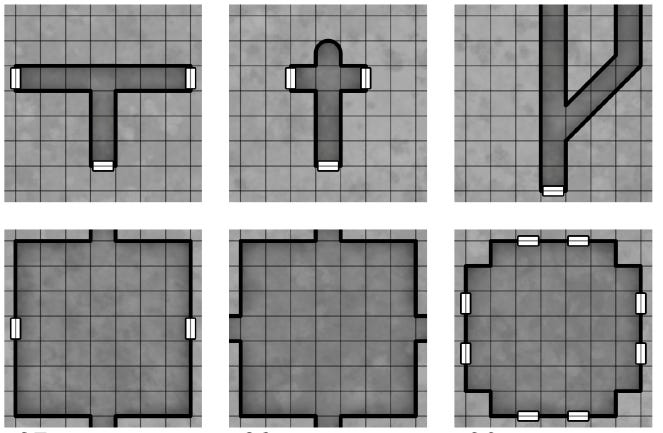
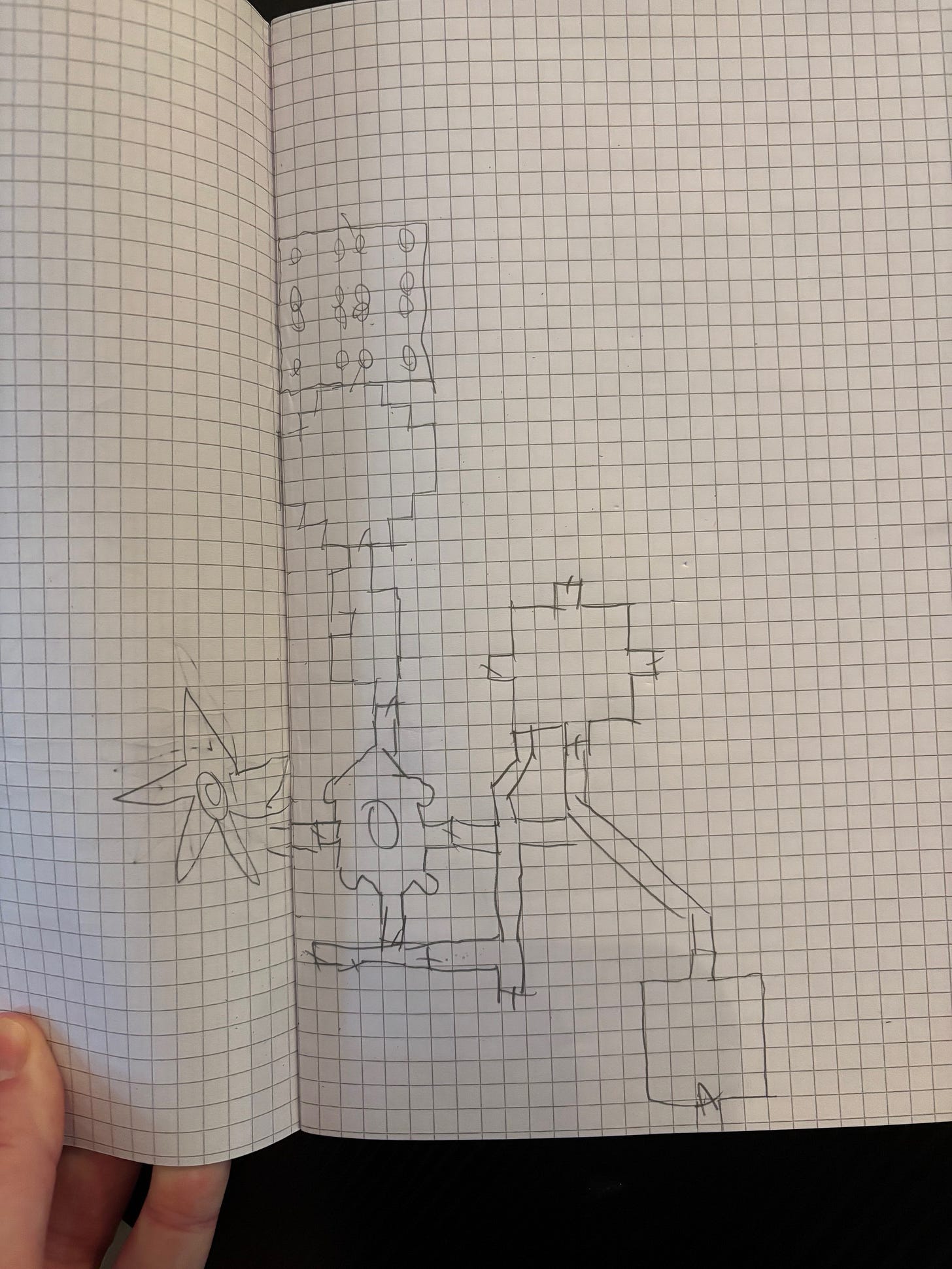
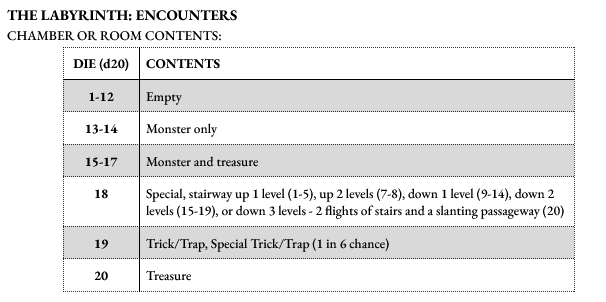
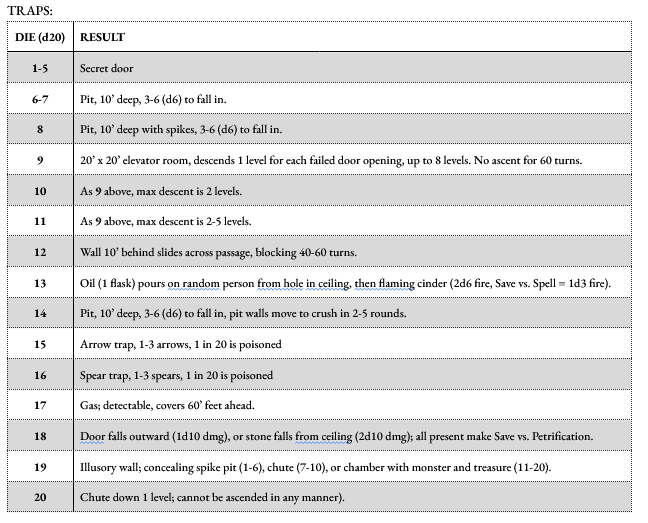
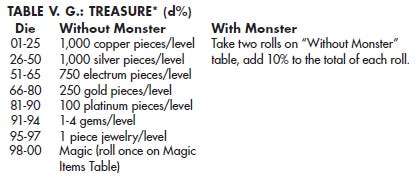


Nice. Back in the day TSR had a set of Geomorphs they sold for quick dungeon making. I've made myself a set. I wish they'd developed the concept a bit more though.
I like what you have put together here. This is a smooth, streamlined system for generating a dungeon on the fly.
My only quibble is that I just don't like doing this unless it is absolutely necessary. I prefer to have most of the "explorable" area mapped out in advance, and keyed with at least bullet points. I like to foreshadow changes in the dungeon, encounters, or traps, which is much easier to do when (at least) the basics have been created and pre-plotted.
One of the things missing from my current solo-dungeon crawl campaign is a custom wandering monster table that can be used even while generating the dungeon as I go.
There are some great articles on "overloaded" encounter tables with all sorts of variables for monster encounters, and I believe these types of different encounter types add a lot of flavor and immersion to the dungeon experience.
I'm looking forward to seeing how this develops!